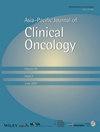Thoracic Cancer Exercise Services in Australia: A Point-Prevalence Survey
Abstract
Background
Cancer guidelines recommend pre- and rehabilitation; however, current research shows these services are not well integrated into clinical practice. To date, there has been no prospective audit of Australian lung cancer exercise services or the people accessing these services. The aim of this study was to describe the exercise pre- and rehabilitation services available to people with thoracic cancer and the characteristics of people with thoracic cancer attending these services in Australia.
Methods
Prospective, observational, multicenter, 5-day, point-prevalence study. Australian healthcare services likely to provide exercise services to people with thoracic cancer were contacted to participate. Conduct and reporting followed the CROSS guidelines.
Results
A total of 397 services were contacted, and 203 responded (51%). Overall, 67% (n = 137) accepted thoracic cancer referrals, and 107 (78%) completed the survey. Most exercise services were targeted at respiratory disease (58%, n = 60) compared with 31% cancer-specific (n = 33) and 5% lung cancer-specific (n = 5). A total of 73 patients with thoracic cancer attended programs across 41 sites (38%). Mean (SD) age was 68.5 (9.7) years. Overall, 4% of patients (n = 3) were culturally and linguistically diverse, and none identified as Aboriginal or Torres Strait Islander. A total of 19 outcomes were used in 51 combinations to assess participants (n = 70), and 12 exercise interventions were delivered in 45 combinations (n = 67).
Conclusions
One-third of responding exercise programs did not offer exercise services to people with thoracic cancer. Almost two-thirds of services that accept referrals did not have a thoracic cancer patient attend their service. High heterogeneity in outcome measures and exercise interventions was observed.


 求助内容:
求助内容: 应助结果提醒方式:
应助结果提醒方式:


